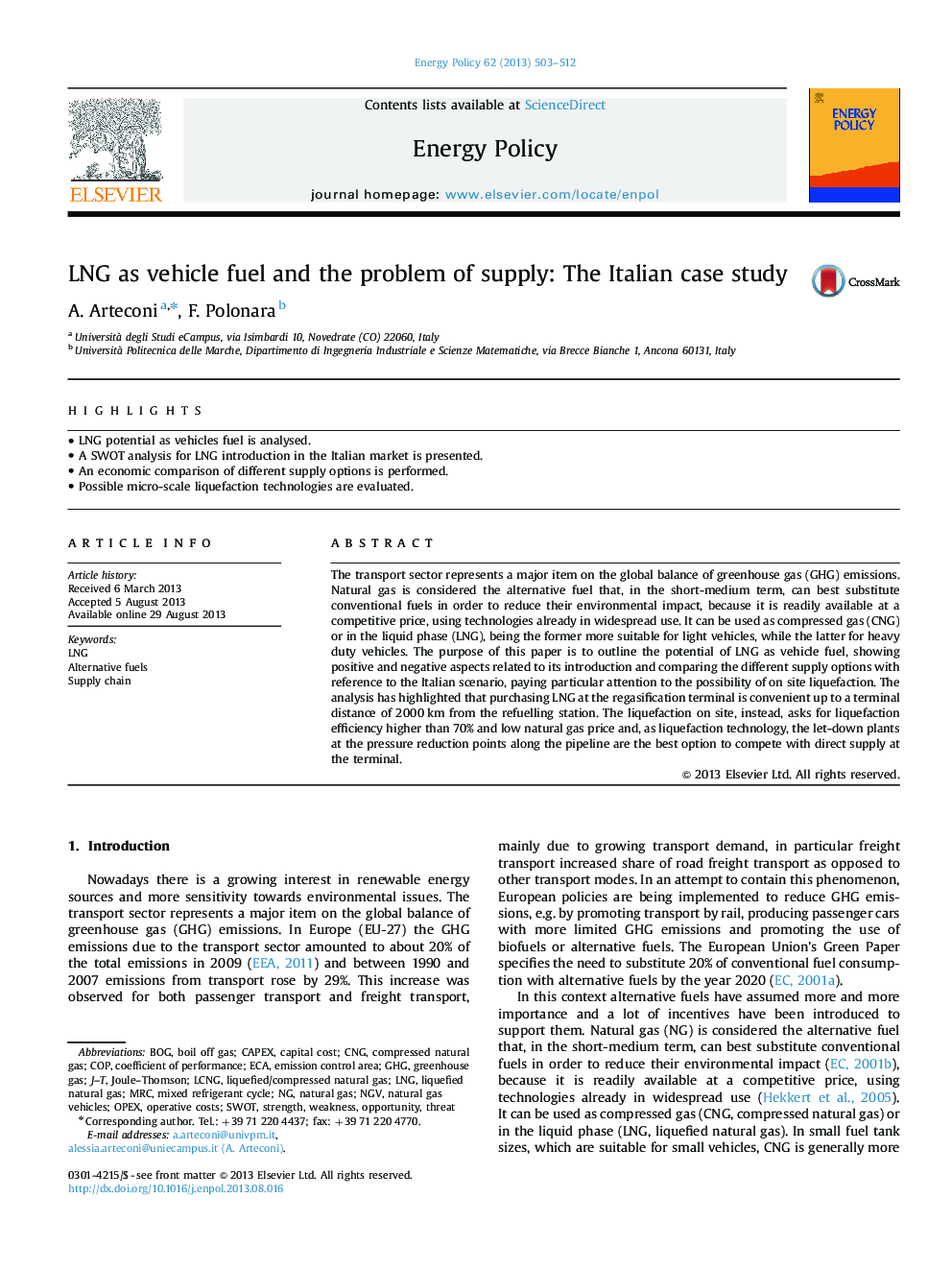| Article ID | Journal | Published Year | Pages | File Type |
|---|---|---|---|---|
| 7404087 | Energy Policy | 2013 | 10 Pages |
Abstract
The transport sector represents a major item on the global balance of greenhouse gas (GHG) emissions. Natural gas is considered the alternative fuel that, in the short-medium term, can best substitute conventional fuels in order to reduce their environmental impact, because it is readily available at a competitive price, using technologies already in widespread use. It can be used as compressed gas (CNG) or in the liquid phase (LNG), being the former more suitable for light vehicles, while the latter for heavy duty vehicles. The purpose of this paper is to outline the potential of LNG as vehicle fuel, showing positive and negative aspects related to its introduction and comparing the different supply options with reference to the Italian scenario, paying particular attention to the possibility of on site liquefaction. The analysis has highlighted that purchasing LNG at the regasification terminal is convenient up to a terminal distance of 2000Â km from the refuelling station. The liquefaction on site, instead, asks for liquefaction efficiency higher than 70% and low natural gas price and, as liquefaction technology, the let-down plants at the pressure reduction points along the pipeline are the best option to compete with direct supply at the terminal.
Keywords
Related Topics
Physical Sciences and Engineering
Energy
Energy Engineering and Power Technology
Authors
A. Arteconi, F. Polonara,
